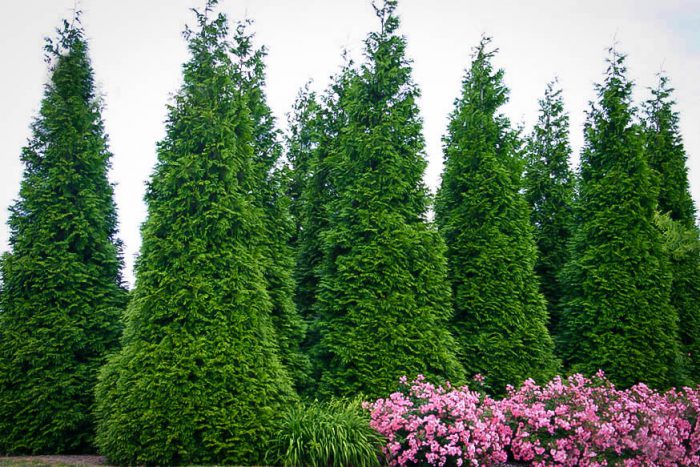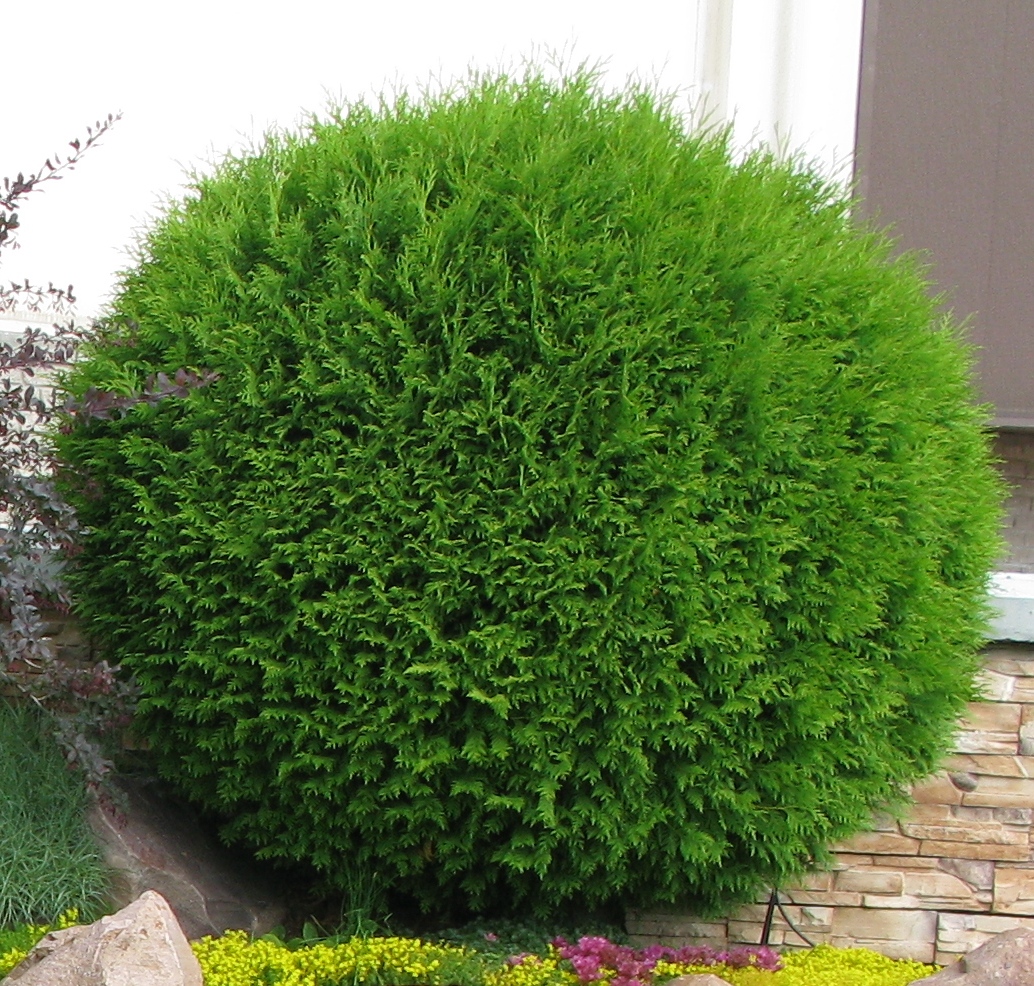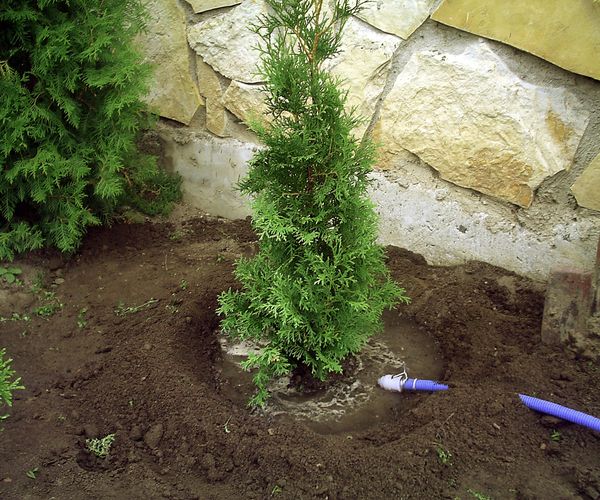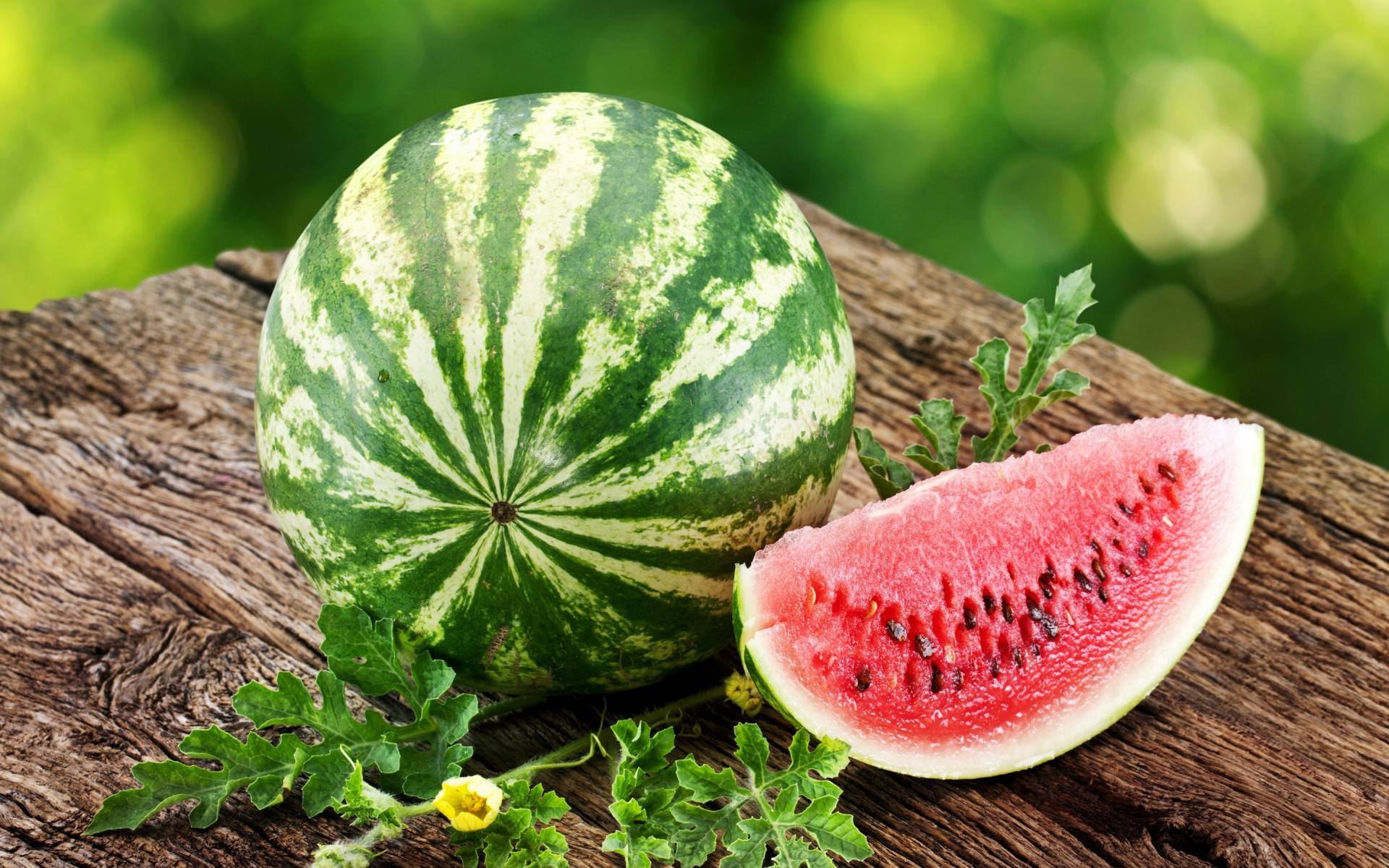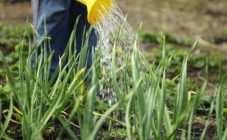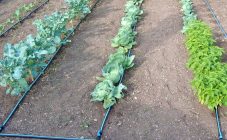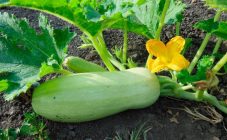Content:
Thuja is a perennial evergreen plant of the Cypress family. In its original form, it grows in the United States and East Asia. In its homeland, this tree can reach a height of more than 20 m. In Russia, this coniferous plant appeared at the end of the 19th century. and it grows here half as small - no more than 11 m. To date, breeders have bred many varieties of thujas. They can be of different varieties (columnar, pyramidal, spherical), as well as a variety of colors and shades. Thuja grows as a tree and shrub. The dimensions of the latter can be both small and up to 3 m in diameter and height.
Description of thuja
Such a beautiful plant is simply irreplaceable in the design of the yard or summer cottage. And if you also pick up neighbors contrasting in color, the garden will be simply magnificent. This beauty can be used in group combinations, or you can make a hedge out of her plantings, which will not let in either noise or wind. Also, an evergreen tree or shrub easily tolerates pruning, so this species can be planted singly, cutting various shapes and spirals out of it.
In addition to decorative qualities, there is another undoubtedly excellent advantage - thujas are not whimsical either to weather conditions or to soils. But still, the more this green foreigner is cherished, the more beauty she will thank.
Having landed this specimen on the site, you can get great benefits, because just sitting in the shade of this tree or wandering in the thickets of bushes, you can get an unprecedented boost of vivacity. It cleans the air from harmful impurities, soot and fills the garden with a pleasant, unobtrusive aroma.
In the Russian climate, Western species grow best, which can be of various colors.
- light green;
- dark green;
- blue;
- aqua;
- yellow.
It is best to plant thuja in areas where it will be sunny and at the same time light partial shade. From the direct rays of the sun, she can get burned and get sick, and in constant shade her crown thinns, and the color does not show all its beauty.
When planting, it should be borne in mind that this species grows not only upward, but also in width too. So, if it is decided to make a hedge out of thuja, it must be planted at least at a distance of slightly less than 1 m from each other. And tall individuals that the florist has planned to plant along the paths are recommended to be placed at least 5 m apart.
Watering thuja in summer
This plant has a lush crown, which, accordingly, evaporates a lot of moisture. In this regard, it is unacceptable for the tree trunk to dry out, since because of this, the thuja may begin to turn yellow. It doesn't matter what time of year it is outside: spring, autumn or summer.
Immediately after the seedling is planted, it is watered, the soil is slightly loosened and mulched. And then continue watering at least 1 time a week. A lot of water is required: from 10 to 50 liters, depending on the size of the plant.After each watering, the soil needs to be loosened, but not deeply (by 8-10 centimeters, since the thuja has a superficial root system). Then mulching is carried out. As mulch can be used:
- peat;
- chips;
- compost;
- shredded bark.
Due to this procedure, the roots will be protected from overheating and drying out. For the winter, mulch is made in a layer of 15-20 cm.
How to determine if you need watering
To do this, you need to take a handful of earth from a depth of 16-20 cm and squeeze it in your hand. If a lump has not formed or it crumbles easily, then watering is required, even if the soil is slightly moist. An observant owner will notice the need for watering in the appearance of his pet: the needles become dull, slightly withered, drooping, the tree as a whole does not look good.
It is necessary to moisten the soil to a fair depth. If you water it superficially, the water will quickly evaporate, and the roots will not receive the necessary portion of moisture. If it is poorly absorbed in the near-stem circle, irrigation can be carried out in 2-3 stages. Thus, it is better to water less often, but more. The soil must be carefully shed to a depth of about 30 cm.
Do not water the plants in the heat during the day, as this can weaken and slow down their development. Sprinkling on hot days is also best done in the morning, but you need to take into account that the thuja does not immediately fall into direct sunlight. Her wet needles should dry out a little to avoid sunburn. And it is better to sprinkle in the evening, then the tree will really take a break from the heat of the day.
How to water thuja in summer
After planting in the spring in the first month, you need to irrigate once a week, be sure to spray the crown from a hose (but without a strong pressure). Thanks to sprinkling, dust is washed off the tree, the stomata of the leaves open, all vital processes are going on in the plant with renewed vigor, and it takes root better. Such irrigation is carried out for 20 minutes. for every tree. The air temperature should be no more than 25 ° С. Also, after such a bath, the coniferous aroma is enhanced.
When planting a thuja in autumn, abundant watering is also necessary. Thus, the plant accumulates enough vitality to survive the cold winter. If it rains in the fall, then watering should be stopped. If the soil under the thuja is waterlogged within a crescent, it can get sick.
How often to water thuja in the summer: how many times
In the heat, abundant evaporation occurs, and all plants need more moisture, including this coniferous beauty. Watering on such days is worth every other day and very abundantly. If the weather is damp, then watering is reduced to 1 time per week, and if the weather is changeable, not hot, but without rain, the procedure is carried out twice a week.
In autumn, too, irrigation of the roots should not be allowed to flow. Even if it is not hot outside, the roots still need moisture and watering should be continued until the onset of frost. The plant should leave during the winter with moist roots.
How to water homemade thuja
Thuja can be perfectly grown at home. But in general, there are no special indoor varieties of this breed in nature. There are those who, with proper care, can adjust to live at home. They do not require much care. They only need thorough watering and fertilization. It is recommended to feed with mineral fertilizers at least once a summer. It is also worth making sure that direct sunlight does not fall on the plant.The best temperature for thuja in summer is 22-26 ° С. Just like her street relative, she requires abundant watering in the morning and irrigation. The earthy lump in which it grows must not be overdried and overly moisturized. Stagnant water is destructive for her, which means there must be good drainage.
This evergreen, charming beauty is simply irreplaceable in the garden. A spectacular thuja is just a find, a highlight for every suburban area or house. A home copy can also be transformed by cutting and special pulling and fixing branches. But the beauty of a coniferous bush cannot be achieved without proper care, in which watering plays an important role. Moreover, this is the most important thing a gardener should pay attention to!
